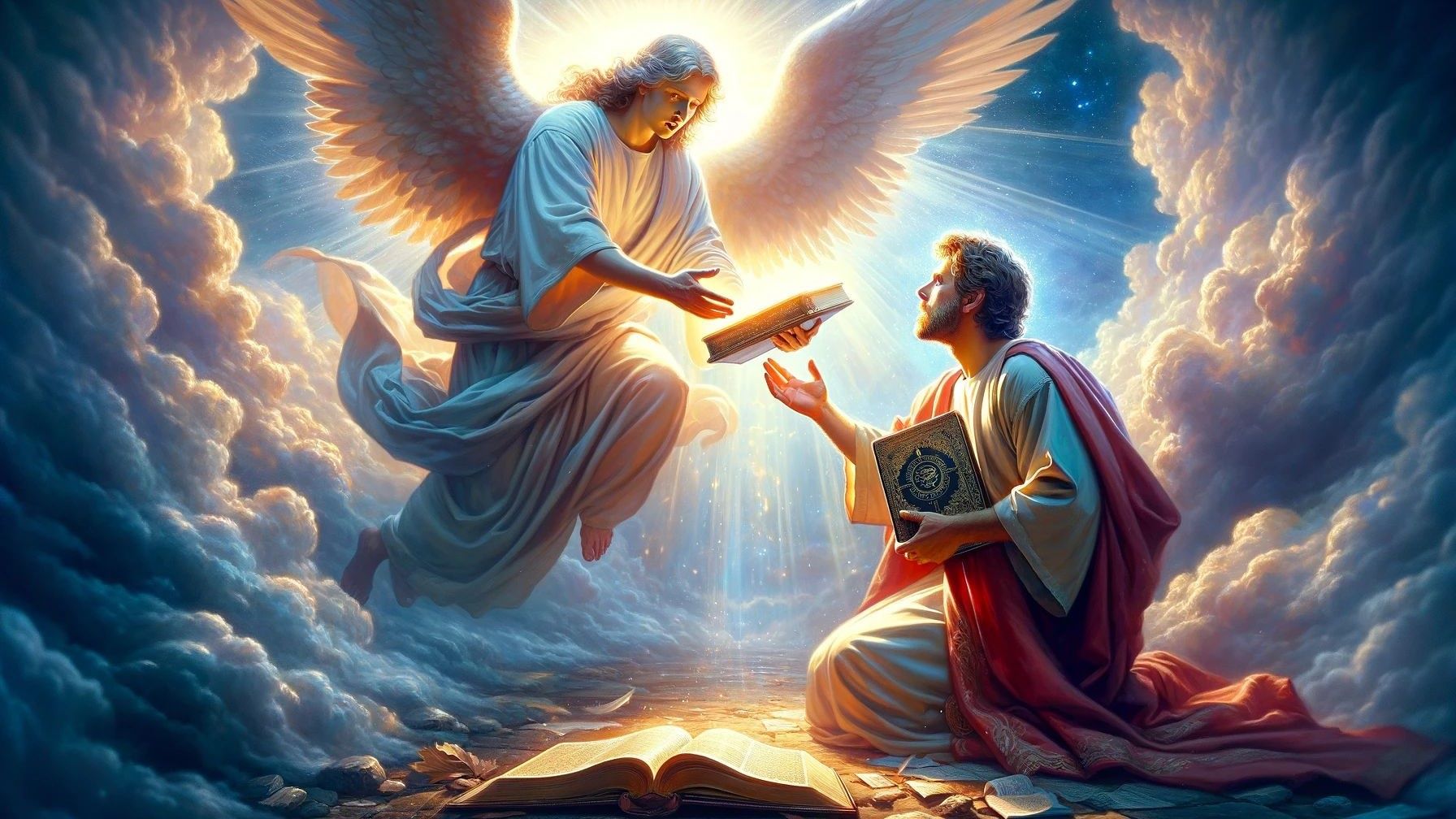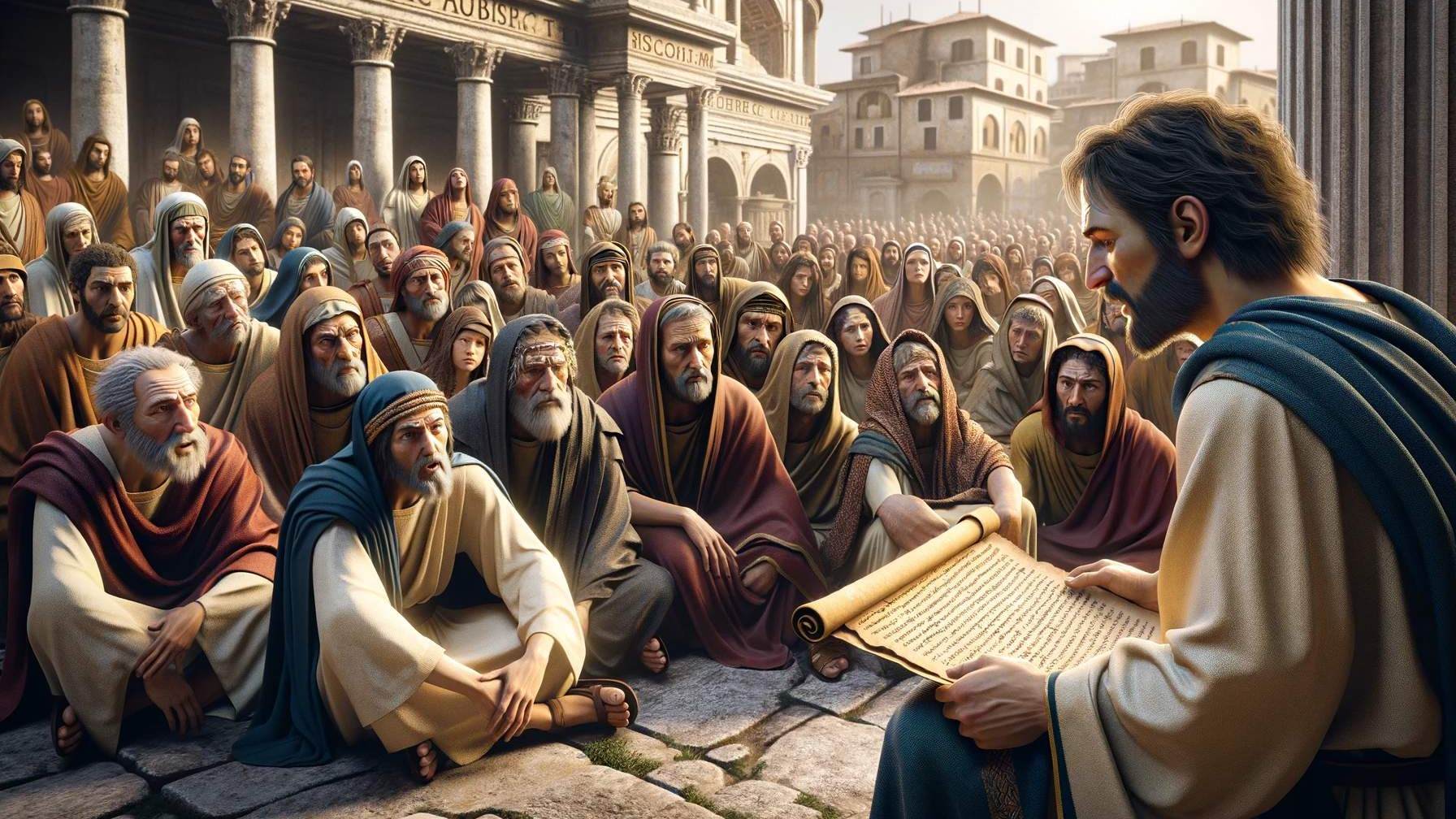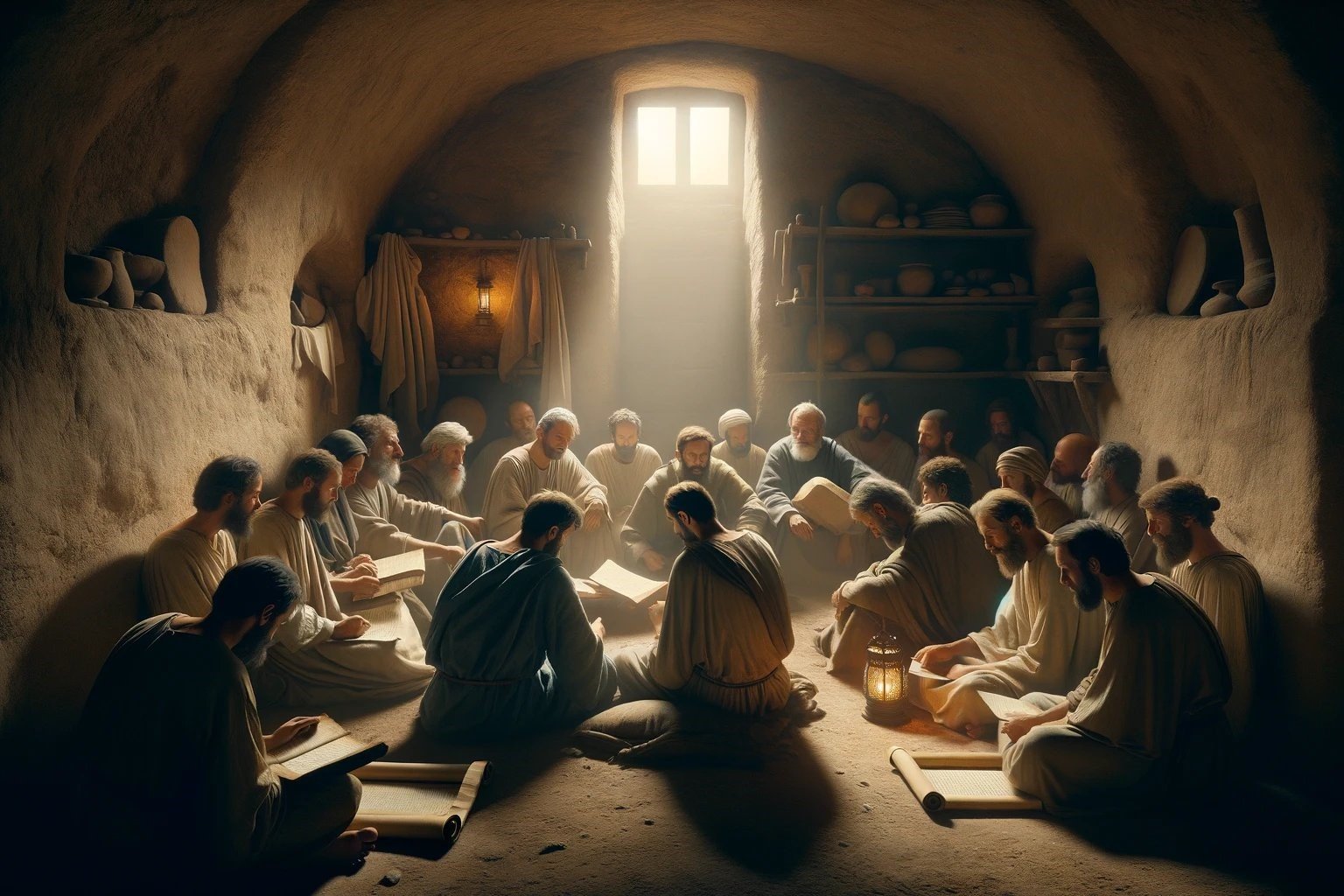Home>Bible Facts>What Is The Book Of Revelation In The Bible About?


Bible Facts
What Is The Book Of Revelation In The Bible About?
Published: February 11, 2024
Ericka Andersen, an editor at Christian.net, expertly merges digital strategy with content creation, focusing on faith and societal issues. Her communication skills enhance the platform's engaging narratives, fostering meaningful dialogue on belief's impact on society.
Discover the fascinating insights into the Book of Revelation in the Bible. Uncover the profound and enlightening Bible facts in this comprehensive guide.
(Many of the links in this article redirect to a specific reviewed product. Your purchase of these products through affiliate links helps to generate commission for Christian.net, at no extra cost. Learn more)
Table of Contents
Introduction
The Book of Revelation, also known as the Apocalypse, is the final book of the New Testament in the Christian Bible. It is a captivating and enigmatic piece of literature that has intrigued and inspired readers for centuries. The book is attributed to the apostle John, who penned it while exiled on the island of Patmos, a small Greek island in the Aegean Sea. The exact date of writing is a subject of scholarly debate, but it is generally believed to have been composed near the end of the first century, around 95 AD.
Revelation is a unique and complex work, characterized by its apocalyptic genre, vivid imagery, and symbolic language. It offers a prophetic vision of the end times, depicting a series of dramatic events, including cosmic upheavals, divine judgments, and the ultimate triumph of good over evil. The book is structured as a letter, a prophecy, and an apocalypse, incorporating elements of each genre to convey its powerful message.
At its core, the Book of Revelation explores profound theological themes, such as the sovereignty of God, the nature of evil, the perseverance of the saints, and the hope of the new creation. It is replete with rich symbolism, including the famous Four Horsemen, the Seven Seals, the Mark of the Beast, and the New Jerusalem, all of which contribute to its mystical allure and interpretive complexity.
The enduring appeal of Revelation lies in its ability to provoke deep reflection, inspire faith, and ignite the imagination. It has been the subject of intense scrutiny and diverse interpretations throughout history, giving rise to a myriad of theological perspectives and eschatological theories. Whether viewed as a roadmap to the end of the world, a political allegory, or a symbolic portrayal of spiritual warfare, the Book of Revelation continues to captivate and challenge readers across cultures and generations.
In the subsequent sections, we will delve deeper into the authorship and date of writing, the genre and structure of the book, the key themes and symbols it presents, as well as the various interpretations and theological perspectives that have emerged over time. Through this exploration, we aim to unravel the profound significance of Revelation and its enduring relevance in the realm of biblical scholarship and spiritual contemplation.
Read more: What Is Babylon In The Book Of Revelation
The Author and Date of Writing
The Book of Revelation is traditionally ascribed to the apostle John, who is also credited as the author of the Gospel of John and the three epistles of John in the New Testament. According to the text itself, the author identifies as "John" and describes receiving the apocalyptic visions while exiled on the island of Patmos. This John is commonly believed to be the same John who was one of the twelve disciples of Jesus, often referred to as John the Apostle or John the Beloved. However, some scholars debate whether the author of Revelation is the same John as the author of the Gospel and the epistles, leading to ongoing discussions about the book's authorship.
The date of writing is another point of contention among scholars. While the traditional view places the composition of Revelation near the end of the first century, around 95 AD, some modern scholars propose an earlier date, during the reign of the Roman emperor Nero in the 60s AD. The debate over the dating of Revelation is influenced by various factors, including the interpretation of specific historical references within the text, the theological themes presented, and the socio-political context of the early Christian community.
The author's exile on the island of Patmos, as mentioned in Revelation 1:9, is often linked to the persecution of Christians under the Roman Empire. This historical backdrop has led scholars to explore the potential influence of imperial oppression on the author's apocalyptic visions and theological message. Additionally, the use of symbolic language and imagery in Revelation has sparked discussions about the book's intended audience and the socio-political climate in which it was written.
Despite the scholarly debates surrounding the authorship and date of writing, the Book of Revelation continues to be revered as a profound and influential work within the Christian canon. Its enigmatic nature, rich symbolism, and enduring themes have solidified its place as a cornerstone of apocalyptic literature and a source of spiritual contemplation for believers and scholars alike. As we delve deeper into the exploration of Revelation, it becomes evident that the questions surrounding its authorship and date of writing only serve to deepen the mystery and fascination that shroud this remarkable biblical text.
The Genre and Structure of the Book
The Book of Revelation belongs to the apocalyptic genre, characterized by its visionary and prophetic nature. It draws upon a rich tradition of apocalyptic literature, which emerged during periods of crisis and persecution, offering hope and reassurance to the oppressed. The apocalyptic genre often employs symbolic imagery, cosmic upheavals, and divine revelations to convey profound theological truths and to address the ultimate triumph of good over evil. Revelation follows this tradition by presenting a series of vivid and dramatic visions that depict the unfolding of eschatological events, culminating in the establishment of God's eternal kingdom.
The structure of Revelation is both intricate and symbolic, comprising a series of visions, seals, trumpets, and bowls that unfold in a cyclical manner. The book is organized into three main sections: the letters to the seven churches (Revelation 1:1–3:22), the visions of the heavenly throne room and the scroll with seven seals (Revelation 4:1–8:1), and the series of judgments and the ultimate victory of Christ (Revelation 8:2–22:21). This tripartite structure reflects the cyclical nature of apocalyptic literature, where the visions and judgments are presented in a repetitive and escalating fashion, leading to the climactic resolution of God's sovereignty and the defeat of evil.
The use of symbolism is pervasive throughout Revelation, with recurring motifs such as the number seven, which represents completeness and perfection, and the imagery of cosmic conflict between the forces of good and evil. The symbolic language employed in the book serves to convey profound theological truths and to engage the reader in a contemplative and interpretive process. The vivid and often surreal imagery in Revelation invites readers to discern the underlying messages and to contemplate the enduring themes of divine judgment, redemption, and the ultimate victory of Christ.
In essence, the genre and structure of the Book of Revelation contribute to its enigmatic and captivating nature, inviting readers to embark on a journey of spiritual contemplation and theological exploration. The intricate interplay of visionary symbolism and cyclical structure serves to immerse the audience in a world of cosmic significance, where the ultimate triumph of God's kingdom is vividly portrayed through a tapestry of apocalyptic visions and profound theological insights.
The Key Themes and Symbols
The Book of Revelation is replete with rich symbolism and profound theological themes that resonate throughout its apocalyptic visions. These key themes and symbols serve as foundational elements that underpin the book's narrative and convey its enduring significance.
1. Cosmic Conflict and Divine Judgment
At the heart of Revelation lies the portrayal of a cosmic conflict between the forces of good and evil, culminating in divine judgment and the establishment of God's eternal kingdom. The vivid imagery of celestial battles, the defeat of the dragon, and the triumph of the Lamb underscores the overarching theme of God's sovereignty over the powers of darkness. This cosmic conflict serves as a powerful metaphor for the spiritual warfare and the ultimate victory of righteousness over sin and death.
2. The Lamb and the Scroll
Central to the symbolism in Revelation is the figure of the Lamb, representing Jesus Christ in his sacrificial and triumphant role. The Lamb, who is worthy to open the scroll and its seven seals, embodies the redemptive and victorious nature of Christ, whose atoning sacrifice brings about the fulfillment of God's divine plan. The scroll, with its seals and apocalyptic contents, signifies the unfolding of God's purposes and the revelation of His ultimate sovereignty over creation.
3. The New Jerusalem and the New Creation
Revelation presents a compelling vision of the New Jerusalem, a symbol of the redeemed and glorified community of believers. This celestial city, adorned as a bride for her husband, represents the culmination of God's redemptive work and the restoration of creation to its original harmony. The imagery of the New Jerusalem evokes the profound hope of a new heaven and a new earth, where God's presence dwells among His people, and where sorrow, pain, and death are no more.
4. The Four Horsemen and the Seven Seals
The iconic imagery of the Four Horsemen of the Apocalypse, each representing conquest, war, famine, and death, conveys the pervasive impact of human suffering and the consequences of sin in the world. The opening of the seven seals, each unveiling a specific judgment or apocalyptic event, underscores the unfolding of God's divine plan and the impending culmination of history.
5. The Mark of the Beast and the Victory of the Saints
Revelation introduces the enigmatic concept of the Mark of the Beast, symbolizing allegiance to worldly powers and the forces of evil. In contrast, the victorious saints, sealed with the mark of God, exemplify unwavering faith and perseverance amidst persecution and tribulation. This theme underscores the ultimate vindication of the faithful and the triumph of God's people over the forces of darkness.
In essence, the key themes and symbols in the Book of Revelation converge to convey a profound message of hope, redemption, and the ultimate victory of God's kingdom. The rich tapestry of apocalyptic imagery and theological motifs invites readers to contemplate the enduring truths embedded within its visionary narrative, inspiring faith and perseverance in the face of adversity.
Interpretations and Theological Perspectives
The Book of Revelation has sparked a myriad of interpretations and theological perspectives throughout history, reflecting the diverse ways in which readers have sought to unravel its enigmatic symbolism and prophetic visions. These interpretations have given rise to a spectrum of theological perspectives, eschatological theories, and hermeneutical approaches, each offering unique insights into the profound significance of Revelation.
-
Historicist Interpretation: This approach views Revelation as a symbolic portrayal of the unfolding of church history, from the apostolic age to the present and into the future. It seeks to identify historical events and figures within the apocalyptic imagery, attributing specific symbols to corresponding periods and movements in Christian history.
-
Preterist Interpretation: Preterist scholars interpret Revelation as primarily addressing events that were fulfilled in the early centuries of the Christian era, particularly focusing on the context of the Roman Empire and the persecution of the early church. They emphasize the relevance of the book to its original audience and its immediate historical context.
-
Futurist Interpretation: Futurist perspectives regard much of Revelation as yet to be fulfilled, anticipating a future period of eschatological events, including the rise of a global ruler, the Great Tribulation, and the Second Coming of Christ. This approach emphasizes the book's relevance to the end times and the culmination of human history.
-
Symbolic or Idealist Interpretation: Symbolic or idealist readings of Revelation emphasize the timeless and universal significance of its symbolism, viewing the apocalyptic visions as allegorical representations of spiritual truths and cosmic realities. This approach seeks to discern the enduring theological messages embedded within the symbolic imagery of the book.
-
Millennial Perspectives: The diverse interpretations of the millennial reign of Christ, as depicted in Revelation 20, have given rise to various theological perspectives, including premillennialism, postmillennialism, and amillennialism, each offering distinct views on the nature and timing of Christ's reign in relation to the end times.
-
Theological Themes: Beyond eschatological speculations, interpretations of Revelation also delve into its profound theological themes, such as the sovereignty of God, the nature of evil, the redemptive work of Christ, and the ultimate victory of God's kingdom. These themes serve as focal points for theological reflection and spiritual contemplation, transcending specific interpretive frameworks.
In essence, the interpretations and theological perspectives surrounding the Book of Revelation reflect the enduring fascination and interpretive complexity of this enigmatic biblical text. The diverse approaches to understanding its symbolism, prophetic visions, and theological themes testify to the profound impact of Revelation on the theological imagination and spiritual contemplation of believers and scholars across diverse traditions and epochs.
Conclusion
In conclusion, the Book of Revelation stands as a testament to the enduring power of biblical literature to captivate, inspire, and provoke deep theological contemplation. Its enigmatic nature, rich symbolism, and profound themes have fueled centuries of scholarly inquiry, diverse interpretations, and theological reflections. From the cosmic conflict between good and evil to the triumphant vision of the New Jerusalem, Revelation offers a tapestry of apocalyptic imagery that continues to resonate with readers across cultures and generations.
The authorship and date of writing, though subjects of scholarly debate, add layers of intrigue to the book, inviting contemplation of the historical context and the author's intended message. The apocalyptic genre and cyclical structure of Revelation immerse readers in a visionary narrative that transcends time and space, inviting them to ponder the ultimate triumph of God's kingdom over the forces of darkness.
The key themes and symbols embedded within Revelation, from the cosmic conflict and divine judgment to the redemptive imagery of the Lamb and the New Jerusalem, invite readers to explore profound theological truths and to find hope in the face of adversity. The book's interpretive complexity has given rise to a spectrum of theological perspectives, from historicist and preterist interpretations to futurist and idealist readings, each contributing to the ongoing dialogue surrounding its significance.
Ultimately, the Book of Revelation continues to serve as a source of spiritual contemplation, theological exploration, and imaginative engagement. Its enduring relevance lies in its ability to inspire faith, provoke reflection, and kindle hope in the hearts of believers. As readers navigate the intricate tapestry of apocalyptic visions and theological motifs within Revelation, they are invited to embark on a journey of profound significance, where the ultimate victory of God's kingdom is vividly portrayed through a narrative that transcends time and space.
In essence, the Book of Revelation stands as a timeless testament to the enduring power of biblical literature to provoke contemplation, inspire faith, and ignite the imagination. Its enigmatic allure and profound themes continue to resonate with readers, inviting them to embark on a journey of spiritual discovery and theological reflection that transcends the boundaries of time and culture.













